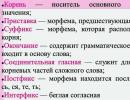Thinking. Be always open and active Thinking and imagination interesting facts
It turns out that our mind is not always useful to us. Reflection, reflections on the unfair structure of the world and an empty game of associations exhaust our strength and divert our attention from what surrounds us. Raptitude blogger David Kane wrote about the limited attention budget and constant internal "mapping" of our experience - T&P translated his article.
People don't talk much about thinking. We constantly talk about what we think, but rarely talk about the process itself. But thinking is a huge part of our lives - it is perhaps the most significant part of our experience.
Your mindset affects everything in life: your actions, your self-image, your abilities, your stress levels, and your health. Your way of thinking determines what kind of experience will prevail during your life: whether it will be fear or admiration, whether it will be too much or not enough.
My life has gotten a hell of a lot better since I started paying attention to the role my thoughts play in it. There was a time when I would have doubted the truth of the following five statements, but now I consider them to be the essential truth of life.
We think almost all the time
Young children are wonderful observers. Most of the time their attention is occupied by what they see and hear. They can definitely think and reflect, but the momentary sensory world seems to them more important. It's not uncommon to see an adult lost in thought and not noticing anything around, but it's strange to see a two-year-old child with the same glassy, absent look.
With maturity, thought comes to the forefront of our experience. Even when we pay attention to the sensory world, we are constantly interpreting, predicting and evaluating. As children grow older, they devote more and more attention to their own internal mapping - it becomes more important than momentary fresh observations.
Imagine tourists wandering around with a map in front of them. They see real-world landmarks, but use them only as references to determine their location and to build a route to another point. Most adults also interact with the world out of habit: the content of our thoughts and impressions is the main landscape, and momentary sensory experience is secondary.
Most of our thoughts don't really lead anywhere.
We need to think: our mind is capable of amazing things. But most thoughts do not lead to any solution or understanding that would be applicable in the real world. We're just kicking up swirls of dust. One thought always leads to another, but keeping track of their progress is like picking randomly growing flowers rather than following the trail of intentionally scattered breadcrumbs.
If you get in the habit of asking yourself what exactly you want to achieve by thinking about something at a certain moment, you may find that you do not find the answer. What is a good thought, is it not pushing for some kind of decision or action? Of course, thinking has other purposes as well - for example, to distract yourself from even more distressing reflections or to please yourself with fantasies. But in this case, the real world comes to an end. More often than not, these thoughts are not intentional, nor are they particularly helpful.
For the most part, thinking is just an unconscious association, tiring and absorbing our attention. This is the usual useless work of the mind that can eat up as much of your attention as it can until you turn it off.
Thinking is addictive
Who cares about the name of the actor who played the average guy on that 80s sitcom whose theme song has been playing in my head since morning? For some reason my mind is busy. If I had not intervened, I would have had to put aside the rest of my life in order to resolve this issue.
The mind is happy with any work, even if it has no foreseeable benefit. Just like a salesman who will sell you all sorts of gizmos until you stop buying them, your mind tends to work while it can. He really likes to believe, compare and invent.
We can all agree that it's great that the mind is capable of these things. But in order to do them, he needs your attention, which is not so much. If the mind knew that it would have to work on a budget, it would be more judicious about the projects it takes on.
We adults are so accustomed to this constant mental activity that when it stops, we have a strange feeling. For the same reason, it's hard to break away from an unplanned Netflix marathon. It's not necessarily because the show you're watching is that good. The thing is, you're more comfortable with continuing to watch rather than deciding what to do instead.
We often confuse our thoughts with their subject matter.
All of us have been so absorbed in thoughts that we have lost the thread of what is happening. You could be completely taken over by your old relationship, or your office schedule across town, or a future where there are no more ocean fish and you barely notice yourself sitting in the bathroom at 4 o'clock on a Saturday afternoon.
Your emotions in these cases correspond better to what is in your head, but not to what is happening around you. This is because all thoughts exist in the present, even thoughts about absent people or events not taking place. So when you think about something that upsets you, you are actually reacting to the thought, not to its subject matter. Obviously, it's not your ex-girlfriend who makes you sit in the bathroom and be sad, it's your thought about this person and this time. She is not there. Generally. There is only a thought.
Your body is constantly being led by the nose. You just have time to think about a plate of french fries, as the salivary glands are already starting a party in the mouth, not yet knowing that there are no potatoes. Or just think about sex, and the genitals will immediately begin to rebuild, moving fluids back and forth and preparing to welcome a guest who will not come. If you indulge in the delusions of your body, it may even try to have a baby on its own.
When you lie in bed and cannot sleep because of political violence, it is not the imperfect arrangement of the world that keeps you awake. It's the thought that you have in this moment right here in your bedroom. Otherwise, why didn't the "organization of the world" bother you from the moment you were born? We can only react to what is in the present.
We can live less inside our heads
I'm not trying to demonize thought. Thoughts are absolutely necessary for our functioning. But the clean-to-noise ratio will overwhelm you if you get in the habit of paying attention to it from time to time. Knowing that most of our thoughts are not really serving us, we can figure out how to regain our attention and bring it back to what is happening in the moment.
Your attention is drawn either to your thoughts, or to the rest of what is happening - to the sensory world of images, sounds, smells, sensations and tastes. He simply has nowhere else to be. So the reduction of the life lived inside the head is equivalent to the increase in the life lived in the material world. Sometimes the world around is so beautiful that it distracts our attention from thoughts, but the rest of the time we need to direct it manually.
It's not particularly difficult to do this - it's hard to remember that it's necessary. Attention management should become a habit, because we adults know how to live in the head without even noticing it, better than doing anything else.
Icons: 1) Anne-Marie Nguyen, 2) Ásgeir Vísir, 3) Luis Prado, 4) Jhun Capaya, 5) Acider C Balandrano.
Thinking is one of the most important tools for understanding the world. It allows you to gain knowledge about objects, phenomena or properties that we cannot directly feel.
What is thinking
Thinking is mental process modeling the laws of the world around on the basis of axiomatic provisions.
However, in psychology there are many other definitions. For example:
- the highest stage of information processing by a person, the process of establishing links between objects or phenomena of the surrounding world;
- the process of reflecting the essential properties of objects, as well as the relationships between them, which leads to the emergence of ideas about objective reality.
controversy over the most exact definition this term is still being pursued.
Are there times when we don't think? It turns out that we do the usual actions without thinking: we clean, comb our hair, turn on the light. We have done all this many times, and our memory produces a ready-made program of actions.
And thinking starts working only when we do something new: we study, we plan actions, we solve problems.
You can think differently. A mathematician in his mind writes complex formulas and solves equations. The composer composes music. The child assembles a car from the designer. All this - different ways thinking.
Psychologists distinguish between practical and theoretical thinking. The practical is connected with objects, and some action or deed becomes its result. If a person wants, for example, to go to another city, then he goes to buy a ticket.
Theoretical thinking does not lead directly to action. When we solve the train speed problem, we stay where we are, rather than rushing to the station.

Types of thinking
In prehistoric times, thinking was inseparable from practical activity. A person received the first knowledge about objects when he worked with them: he sculpted, made, changed. Psychologists call this type of thinking visual-effective.
The next stage of development was visual-figurative thinking. It already deals with ideas: a person does not change the situation in reality, but only in his imagination.
The last to appear was verbal-logical thinking - the ability to think abstract concepts that are expressed in words.
So, thinking is classified as follows:
- Visual-effective - manipulates the subject area (available in children from birth to 1.5 years);
- Specific-subject - tasks are solved with the help of a real existing object (from 1.5 to 7 years)
- Visual-figurative - is carried out with a direct perception of the surrounding reality, images are presented in short-term and operative memory (from 3 to 7 years).
- Abstract-logical - thinking in abstractions, that is, categories that do not exist in nature (it is formed after 7 years). An interesting fact is that animals do not have abstract thinking.

Forms of thought
The main forms of thinking are the concept, judgment, generalization and conclusion. With the help of concepts, we define the signs of objects and phenomena. For example, the concept of "useful" characterizes an object or action as good and necessary for health.
Judgment is such a construction of thoughts in which we agree with an idea or reject it. When we say to ourselves: “Yes, cucumbers are healthy, so you need to eat more of them” or: “Yes, cucumbers, of course, are healthy, but I don’t like them and I won’t eat them”, we make a judgment.
Generalization is the selection of a group of objects that have common features. Knowing that cucumbers and cabbage are healthy and that they are vegetables, we generalize: "Vegetables are healthy."
An inference is the conclusion that a person makes based on several judgments. For example, based on the judgments: “Vegetables are healthy” and “Those who eat a lot of hamburgers are more likely to suffer from diseases of the cardiovascular system,” one can conclude: “It is better to eat vegetables than hamburgers.”
The thought process includes analysis, that is, the decomposition of the whole into its component parts, and synthesis, the construction of the whole from parts.
Analysis and synthesis can be compared to the preparation of a dish. First, we remember what products it consists of, and then we mix these products in a certain order, fry, stew or bake. The same "kitchen" and thinking.

Thinking disorders
In the end, we will give some common violations of thinking.
Diversity of thinking- judgments of patients about any phenomena occur in different planes. Patients do not complete the task, although they learn the instructions, they retain the mental operations of comparison, distinction, generalization, and distraction.
Reasoning is one of the types of thinking disorders, characterized by empty, fruitless verbosity, "reasoning" with the absence of specific ideas and purposefulness of the thought process.
Uncriticality - loss of purposefulness of thinking, superficiality, incompleteness of thinking; thinking ceases to be the regulator of human actions.
Symbolic thinking- a psychopathological symptom that manifests itself in a disorder of thinking, in which the patient gives the concepts an allegorical meaning, which is completely incomprehensible to others, but which has exceptional significance for the patient.
Atactic thinking characterized by the presence of paralogical constructions and normally incompatible concepts. Speech is grammatically constructed correctly, but is inaccessible to the understanding of others.
Pathological thoroughness- one of the disorders of thinking in terms of the pace of the flow of associations, in which its purposefulness is violated.
Fifteen years ago there was a revolution in psychology that changed our understanding of the mind. The cognitive revolution has inspired psychologists to see the brain as part of an organic computer rather than a black box that will never be opened.
This metaphor has prompted psychologists to explore central software as our daily functions, thus opening up a veil of mystery about how the thought process, learning, memory, and speech work.
Below are 10 classic cognitive studies in the field of psychology that have helped to better understand how the thinking process works.
1. How experts think
Without specialists who influenced the course of history, the human race would cease to exist. But what about how experts think to achieve amazing results?
The answer lies in how experts, as opposed to beginners, approach problems. Here is what Chi et al. (1981) discovered when they compared experts versus novices about problems in physics.
Beginners tend to get stuck on what they think about the superficial details of a problem, while experts see the root cause of it. An abstract approach to a problem makes experts more successful.
2. Short-term memory lasts 10-15 seconds
Short-term memory is actually much shorter than many people think. It lasts only 10-15 seconds.
We know this from a classical cognitive psychology study by Lloyd and Marget Peterson (Peterson & Peterson, 1959), in which participants attempted to remember and recall a string of three-letter expressions, such as FZX. During the test, after 3 seconds, they could only remember 80% of the information, and after 18 seconds, only 10%.
3. Not logical
People find formal logic extremely difficult, and that's okay.
Here is a quick test for you; don't be surprised if your brain overheats:
“You are shown four cards laid out on a table, each of which is numbered on one side, and the reverse side is colored. On the visible side of the first two cards show 3 and 8, the other two - red and brown. How many and which cards must be turned over to check the truth of the following statement: if the card shows an even number, then the back of the card is red? ”
The correct answer is to turn over two (and only two) cards: with the number 8 and with a brown back. Even after hearing Wason's answer and explanation of this problem, most people do not believe in its veracity. If you have solved this problem correctly, you are in the minority, namely the 10% (Wason, 1968).
Our brain does not perceive this kind of formal logic.

4. The ability to present correctly
The way you present a problem has a huge impact on how others perceive it. People do not like to take risks so much that even a hint of danger can make them run as fast as they can.
Participants in one survey conducted by Kahneman and Tversky (1981) were asked to imagine 600 terminally ill people. The disease has been treated, but it is risky. If you decide to use the treatment, here are the odds: “33% chance of saving all 600 patients, 66% chance of death.” Hearing this, 72% of people said it was a good bet.
Then another formulation was provided:
“33% - the chances that the patients will not die, 66% - the chances that everyone will die” ... the number of respondents who would take risks according to such statistics has decreased to 22%!
The uniqueness of this study is that both formulations have an identical semantic load. It's all about the presentation of information that changes everything radically. The way we think has a profound effect on problem solving.
5. Mindfulness is like a spotlight
In fact, we have two kinds of vision - real and virtual.
Our real eyes rotate in eye orbits, and virtual ones look around the field of view, choosing the object of focusing attention. People use virtual vision all the time: for example, when they look at each other using peripheral vision. There is no need to look an attractive person directly in the eye, it is enough to look at him sideways.
Psychologists call this the "attention spotlight" and research has actually measured this movement. This means that we can notice things for a fraction of a second before our eyes focus on one thing.
6. The effect of "cocktail party"
Not only sight allows you to focus, hearing is also subtle.
So, if you are at a noisy party, you can ignore all voices except the voice of your interlocutor. Or you can eavesdrop on the conversation behind.
An excellent demonstration of this fact was given in 1950 by Cherry (1953). He made the discovery that people can distinguish between different voices when reading two different messages.
7. Where is the duck?
If you take a toy duck and show it to a 12-month-old baby, and then put your hands under the pillow and leave it there, the child will not notice the loss and will still look at your hands, and with a very small probability will look under the pillow. This is explained by the fact that at this age, things that the child does not see, he perceives as non-existent.
As the famous child psychologist Jean Piaget said:
“The surrounding world appears to the child as a set of pictures that arise from non-existence at the moment of action, and go into non-existence at the end of it.”
And, finally, only after six months the child looks under the pillow; he is aware that things that are not in sight can continue to exist. And this is only a small fraction of the miracles regarding the development of children.
8. McGurk Effect
The brain integrates information from all of our senses. All our life experience is based on this information. This fact is brilliantly proven by the experience of McGurk (McGurk & MacDonald, 1976).
Check out the BBC video below to see the full effect. You won't be able to believe it until you see it for yourself. Feelings are really weird.
9. Suggestion of false memories
Sometimes memories arise in our thoughts that were somewhere in the depths of our memory and were, as it seemed to us, forgotten or transformed.
One of the most striking studies by Elizabeth Loftus showed that memories can be changed, even inculcated over time.
In her study, the childhood memory of “one day you got lost in the mall” was implanted into the memory of some people, despite the fact that their family members claim that such a memory is false. 50% of study participants succumbed to suggestion
10. Why incompetent people are not aware of their incompetence
There are all kinds of cognitive biases in the mind.
David Dunning and Justin Kruger found that the most ignorant people are the least aware of their ignorance. On the other hand, on the same scale, the most competent know their own shortcomings best. published by econet.ru
Translation Anna Sushchenko
American researcher David di Salvo collected dozens of studies that explain our behavior in the book "Understand what your brain wants and do it the other way around." His theory is simple: our brain loves stability, consistency and clarity. It is a pity that all these qualities are our sworn enemies, as they prevent us from conquering new heights. We plunge into the bottomless world of stereotypes. By posting labels everywhere, we think that we make our life easier, save physical and mental energy.
Why do we fall in love with those who reject us? Why do we think we have everything under control all the time? David explains questions like this using scientific literature and research. Here are some Interesting Facts about our consciousness and behavior, which you may not have previously guessed.
1. Certainty
Our brain loves stability. Uncertainty represents a threat: as it increases, the amygdala (threat response) is activated and activity in the ventral striatum decreases. Our brain "experiences" a terrible "malaise".
2. Cognitive distortions
The search for certainty can lead us to a state of intransigence. We stop noticing obvious things, we move ahead contrary to our true desires. According to research conducted by a group of German and Italian scientists, people who are ready for unpredictability deal with problems better and faster than those who strive for absolute certainty.
3. Schemes
Our brain perceives everything at the level of schemes. For example, imagining summer, our imagination draws a picture of the sun, sand, warmth. If we remove one element from this scheme, then we ourselves will substitute our “label”, the missing element. It will be different for everyone, in some cases it may coincide (template thinking).
4. Illusion of control
We have confidence that we keep everything under control and nothing can escape our attention. Therefore, people continue to play in the casino, the lottery, inventing more and more new winning strategies. Someone calls it the word "fortune", but this is just a red word for others. Subconsciously, we are convinced that due to certain manipulations (which we keep under control), we can win in any business.
5. Present and future
The brain is evolving, so we are able to make decisions in real time. Because of this, people cannot project the future. This disadvantage is a real feeding trough, for example, for marketers. Wanting to get something definite, we believe in the promises of others, we believe in those beautiful pictures that others paint for us. Marketers decide for us which products we choose. For some reason, our skin will definitely become flabby in a year, and without shampoo in a week we will be “attacked” by dandruff.
6. Head in the clouds
David states that 30-50% of our time is spent in the clouds. But even in this state, our brain is able to process information and solve some problems.
7. Identification
It is not for nothing that computer games cause such a stir among people of any age. Those who develop them have done a good job of identifying. The same goes for books. Our brain always associates itself, its actions with something or someone. Therefore, we cannot tear ourselves away from a computer toy or a certain book.
8. Digital vaccine
Scientists from the USA have proved that we use digital technologies in order not to feel lonely, to feel needed. Such “digital vaccines” sometimes have such a strong effect on the brain that we are able to heal, get out of depression by watching our favorite series or program. We are able to feel support and help from non-existent, fictional characters (actors, politicians, activists, musicians).
9. Emotional needs
The feeling of loneliness does not depend on how many people surround us. The main thing is to get others to do what we need emotionally.
10. Rejected
In one study, which was published in 2012 in the journal Psychological Science, it was demonstrated that if we were not accepted, not recognized, stepped over us, then in the future we will only experience negative emotions towards this object. But this does not mean that we will do the same in response. Vice versa. We will strive in every possible way for the one who repels us, even if we no longer need this someone. Such strange behavior can often be observed in relationships between a man and a woman.
The brain wakes up longer than the body. The intellectual abilities of a person immediately after waking up are lower than after a sleepless night or in a state of moderate intoxication. To "wake up" the brain, in the morning it is better to read a little or solve a crossword puzzle.
It is easier for the brain to understand the speech of men than women. Women's voices are more musical and sound at higher frequencies. The frequency range is wider than male voices. The human brain has to "decipher" the meaning of what a woman says using its additional resources.
The human brain, as scientists at Harvard University have established, can accommodate the number of bytes (1 byte is the minimum unit of information, equal to 8 bits), expressed as a number with 8432 zeros.
Designed by Disney, Celebration City (Florida, USA), which can accommodate 20,000 people, is the city of the future. Its cost is $350 million. Each of the 8,000 homes has an Internet connection, high-speed ISDN connection with cable TV, multimedia resources, and optional video. Celebration has been under construction since 1996, by the summer of 1997. 1,000 people lived in it.
A group of American scientists have found that the human brain continues to evolve, reports BBCNews. Comparing the genotype of a modern person and an ancestor who lived 37 thousand years ago, the researchers found a significant discrepancy in the structure of two genes that are responsible, presumably, for the volume of the brain.
Jacques Inaudi, who was born in 1877 and remained illiterate until the age of 20, gave public performances from the age of 7, extracting roots of the 3rd and 5th degrees from 21-digit numbers. He differed in that he did not see the answers, but heard them.
Diamandi had an extraordinary memory. He was eidetic and saw the numbers written. Diamandi could repeat about 40 numbers after a single reading aloud and about 300 that were encountered in various tasks during a 3-hour session.
According to various estimates, the amount of human memory is approximately from one with seven zeros to one with 21 zeros. Assuming that one book of 10 printed sheets contains 432,000 characters, the human brain can store information equal in volume to 23,000 to 300 trillion books. For comparison: the fund of one of the largest libraries in the world - the US National Library of Congress - is 100 million books.
Ben Underwood, thanks to his super hearing, is able to distinguish even very quiet sounds coming from any object.
Eyra Colbury, a native of the United States, gave a performance in London in 1814. At the age of 10, he could instantly build not very big numbers to the 16th power and extract the roots.
The human brain uses less energy than a light bulb in a refrigerator. Messages between brain cells are transmitted using electrical signals. This uses 12 watts of energy - less than a light bulb in a refrigerator.
Mental work does not tire the brain. The composition of the blood flowing through the brain is unchanged throughout its vigorous activity, no matter how long it lasts. At the same time, the blood that is taken from the vein of a person who has worked all day contains a certain percentage of “fatigue toxins”.
The color that is best perceived by the brain is yellow-green. Our eyes have receptors for blue, green and red. But the brain does not receive information about colors, it receives information about the difference between light and dark, and information about the difference between colors. By the way, this color is called chartreuse.
Prayer has a beneficial effect on brain activity. During prayer, the perception of information by a person goes bypassing thought processes and analysis, i.e. the person escapes from reality. In this state (as in meditation) delta waves occur in the brain, which are usually recorded in infants in the first six months of his life.






